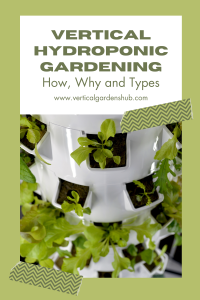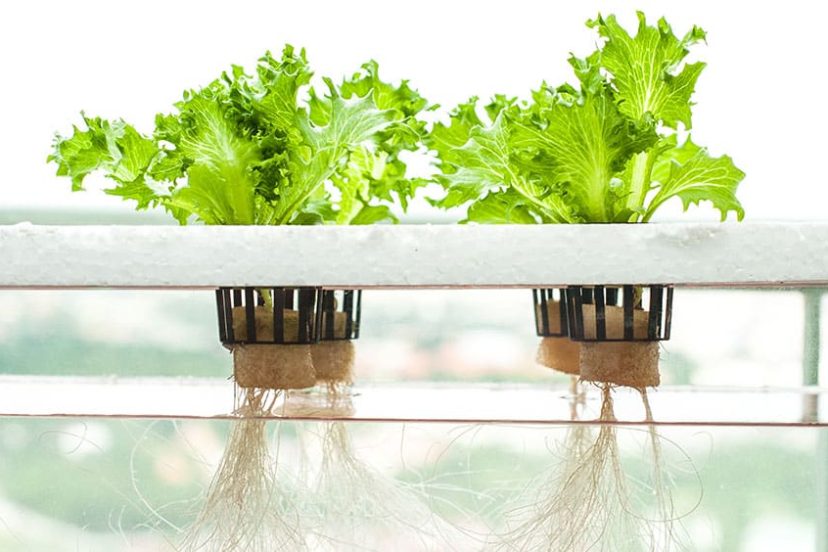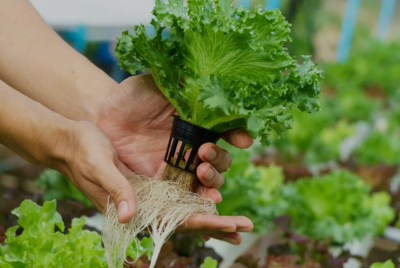Vertical Hydroponic Gardening: How, Why and Types
If you haven’t heard about it yet, vertical hydroponic gardening is a revolutionary way of growing plants without soil, utilizing limited space to create stunning green walls. It’s time-efficient, environmentally friendly, and a great solution for urban gardeners and anyone looking to maximize their plant growth.
Contents Covered
- Advantages of Vertical Hydroponic Gardening
- Disadvantages of Vertical Hydroponic Gardening
- Types of Vertical Hydroponic Systems
- How Vertical Hydroponic Gardening Works
- Setting Up Your Vertical Hydroponic Garden
- Tips for Maintaining Your Vertical Garden
Advantages of Vertical Hydroponic Gardening
One of the most significant benefits of vertical hydroponic gardening is its efficient use of space. By growing plants vertically, we can stack multiple layers of planters on top of each other, effectively multiplying the growing area without expanding horizontally. This makes it perfect for small balconies, limited space gardens, patios, or even indoor spaces with limited room.
Another advantage is the remarkable growth and yields achieved through this system. The plants have continuous access to water and nutrients, leading to faster growth rates and more substantial harvests compared to traditional soil gardening. Imagine having fresh herbs, juicy tomatoes, and crisp lettuce readily available just steps away from your kitchen!
Water scarcity is a critical global issue, making water conservation a top priority for gardeners. Vertical hydroponic systems use significantly less water than conventional gardening methods. The nutrient-rich water is recycled and continuously provided to the plants, reducing waste and promoting sustainable agriculture.
Pests and diseases can be relentless foes for traditional gardeners, but vertical hydroponic systems offer a protective shield. Elevated from the ground, plants are less susceptible to soil-borne pests and diseases. This reduces the need for harmful pesticides and ensures cleaner, healthier produce.
Beyond the practical advantages, vertical hydroponic gardens are incredibly aesthetically pleasing. They transform plain walls into vibrant green spaces, adding a touch of nature to urban environments. The creative arrangement of plants, textures, and colors can turn your vertical garden into a living work of art.
Disadvantages of Vertical Hydroponic Gardening
While vertical hydroponic gardening brings many benefits, it’s essential to consider some potential downsides. One of the main concerns is the initial setup cost. Hydroponic systems can be more expensive to set up than traditional gardens. However, with the increasing popularity of hydroponics, the prices have become more accessible in recent years.
Maintaining a vertical hydroponic garden requires attention to detail. You’ll need to regularly monitor the nutrient levels, pH balance, and water supply to ensure optimal plant health. While this might seem daunting initially, it becomes second nature with experience, and the results are well worth the effort.
Another consideration is the dependency on electricity and water supply. Hydroponic systems rely on pumps and timers to circulate the nutrient solution, which requires a stable power source. Additionally, a consistent water supply is vital for the system to function correctly.
Types of Vertical Hydroponic Systems
There are various types of vertical hydroponic systems, each with its unique characteristics and advantages.
- Tower systems are freestanding structures with multiple planting ports, resembling a vertical column of greenery.
- Wall-mounted systems, as the name suggests, are fixed on walls, adding a living backdrop to any space.
- Hanging systems suspend planters from ceilings or structures, ideal for small spaces.
- A-frame systems provide a sloped frame with plants arranged on both sides which optimizes sunlight exposure.
Also Read:
- Aquaponic Gardening: A Symbiotic Relationship
- Hydroponics vs Aeroponic Gardens: How they differ
- Building an Aquaponic Gardening System: Step by Step Guide
- Aeroponic Gardening for Beginners: Understanding the Basics
How Vertical Hydroponic Gardening Works
At the heart of vertical hydroponic gardening are the principles of hydroponics. Instead of soil, plants grow in a nutrient-rich water solution that supply the essential elements they need to thrive. Key components of a vertical hydroponic system include a reservoir for the nutrient solution, a pump to circulate the solution, and a delivery system to reach the plants.
The plants’ roots are suspended in the nutrient solution, absorbing water and nutrients directly. This direct uptake allows for efficient nutrient absorption, resulting in faster growth rates and healthier plants. Since the plants are not bound by soil, they can focus more energy on upward growth, leading to lush foliage and impressive yields.
Setting Up Your Vertical Hydroponic Garden
Getting started with your own vertical hydroponic garden is an exciting journey. To begin, choose a suitable location with ample sunlight and protection from harsh weather conditions. Select plants that thrive in hydroponic environments and align with your preferences for culinary or ornamental purposes.
Assembling the system can be a fun and rewarding DIY project. There are various pre-made kits available in the market, or you can construct your system using recycled materials. Follow the instructions carefully, ensuring a secure and stable setup.
Tips for Maintaining Your Vertical Garden
Once your vertical garden is up and flourishing, regular maintenance is essential for continued success. Monitor the pH levels of the nutrient solution regularly and adjust as needed to ensure nutrient uptake efficiency. Regularly prune and harvest the plants to encourage new growth and prevent overcrowding.
In case of any issues such as wilting, yellowing leaves, or signs of pests, address them promptly. Timely intervention can often save your plants from serious problems.
Conclusion
Vertical hydroponic gardening offers a fantastic way to enjoy gardening in limited spaces while reaping rewards. From efficient space use and enhanced plant growth to water conservation and protection against pests, this innovative approach has a lot to offer. With a little dedication and care, you can create your own thriving vertical garden, enriching both your living space and your life.

FAQs
Q: Can I grow any plant using vertical hydroponic systems?
Yes, most plants can be grown in a vertical hydroponic system. Leafy greens, herbs, and small vegetables are particularly well-suited for these setups.
Q: How often should I change the nutrient solution?
It is best to change the nutrient solution every two to three weeks to maintain its effectiveness and prevent nutrient imbalances.
Q: What kind of lighting is ideal for vertical hydroponic gardening indoors?
LED grow lights are a popular choice for indoor vertical hydroponic gardens as they provide the right spectrum of light for plant growth while being energy-efficient.
Q: Can I use recycled materials to build my vertical hydroponic system?
Absolutely! Using recycled materials not only reduces costs but also promotes sustainability.
Q: Are vertical hydroponic systems suitable for commercial use?
Yes, vertical hydroponic systems are gaining popularity in commercial agriculture due to their efficient use of space and high yields.





